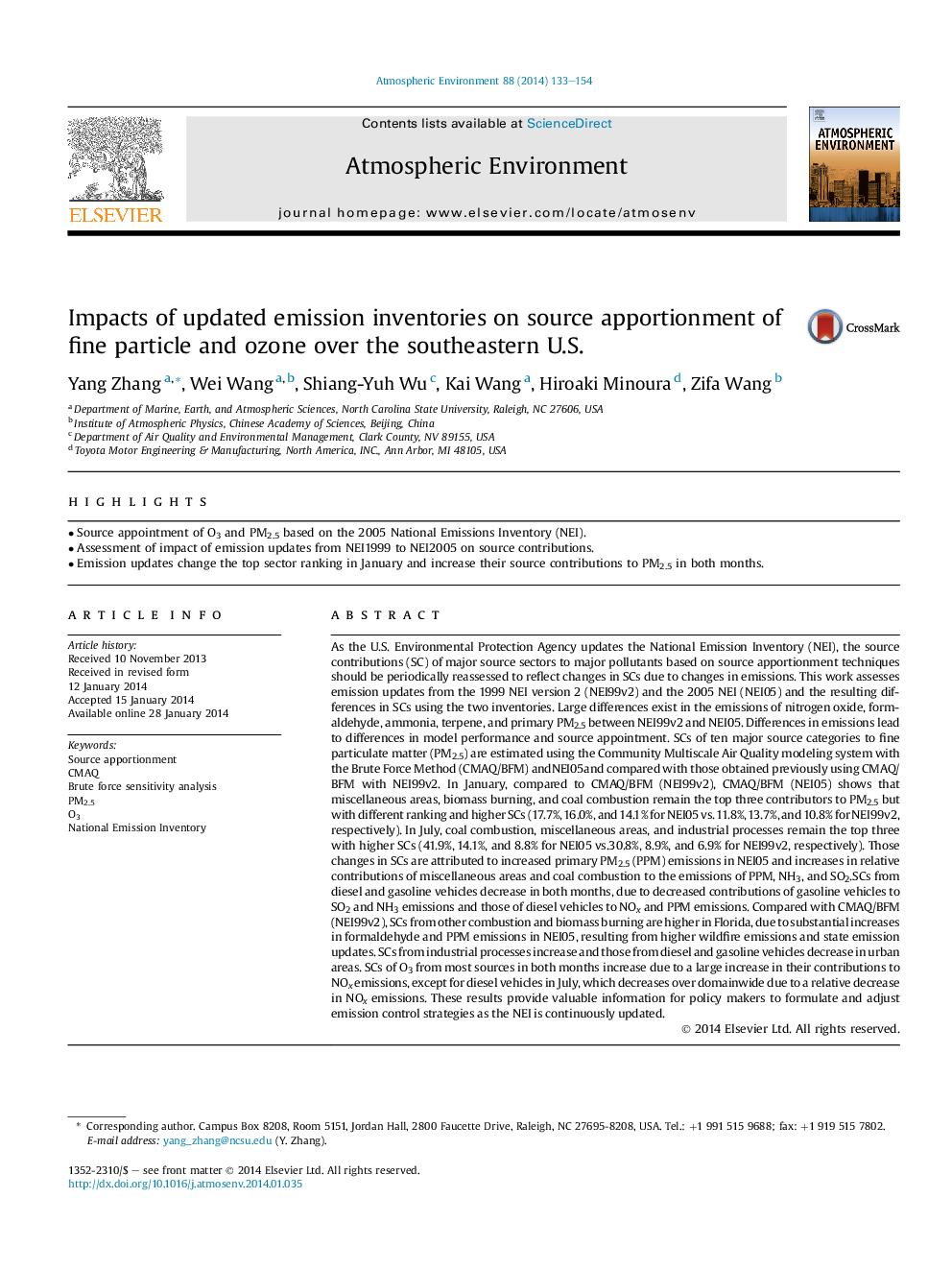| کد مقاله | کد نشریه | سال انتشار | مقاله انگلیسی | نسخه تمام متن |
|---|---|---|---|---|
| 6340854 | 1620383 | 2014 | 22 صفحه PDF | دانلود رایگان |
عنوان انگلیسی مقاله ISI
Impacts of updated emission inventories on source apportionment of fine particle and ozone over the southeastern U.S.
دانلود مقاله + سفارش ترجمه
دانلود مقاله ISI انگلیسی
رایگان برای ایرانیان
کلمات کلیدی
موضوعات مرتبط
مهندسی و علوم پایه
علوم زمین و سیارات
علم هواشناسی
پیش نمایش صفحه اول مقاله

چکیده انگلیسی
As the U.S. Environmental Protection Agency updates the National Emission Inventory (NEI), the source contributions (SC) of major source sectors to major pollutants based on source apportionment techniques should be periodically reassessed to reflect changes in SCs due to changes in emissions. This work assesses emission updates from the 1999 NEI version 2 (NEI99v2) and the 2005 NEI (NEI05) and the resulting differences in SCs using the two inventories. Large differences exist in the emissions of nitrogen oxide, formaldehyde, ammonia, terpene, and primary PM2.5 between NEI99v2 and NEI05. Differences in emissions lead to differences in model performance and source appointment. SCs of ten major source categories to fine particulate matter (PM2.5) are estimated using the Community Multiscale Air Quality modeling system with the Brute Force Method (CMAQ/BFM) andNEI05and compared with those obtained previously using CMAQ/BFM with NEI99v2. In January, compared to CMAQ/BFM (NEI99v2), CMAQ/BFM (NEI05) shows that miscellaneous areas, biomass burning, and coal combustion remain the top three contributors to PM2.5 but with different ranking and higher SCs (17.7%, 16.0%, and 14.1% for NEI05 vs. 11.8%, 13.7%, and 10.8% for NEI99v2, respectively). In July, coal combustion, miscellaneous areas, and industrial processes remain the top three with higher SCs (41.9%, 14.1%, and 8.8% for NEI05 vs.30.8%, 8.9%, and 6.9% for NEI99v2, respectively). Those changes in SCs are attributed to increased primary PM2.5 (PPM) emissions in NEI05 and increases in relative contributions of miscellaneous areas and coal combustion to the emissions of PPM, NH3, and SO2.SCs from diesel and gasoline vehicles decrease in both months, due to decreased contributions of gasoline vehicles to SO2 and NH3 emissions and those of diesel vehicles to NOx and PPM emissions. Compared with CMAQ/BFM (NEI99v2), SCs from other combustion and biomass burning are higher in Florida, due to substantial increases in formaldehyde and PPM emissions in NEI05, resulting from higher wildfire emissions and state emission updates. SCs from industrial processes increase and those from diesel and gasoline vehicles decrease in urban areas. SCs of O3 from most sources in both months increase due to a large increase in their contributions to NOx emissions, except for diesel vehicles in July, which decreases over domainwide due to a relative decrease in NOx emissions. These results provide valuable information for policy makers to formulate and adjust emission control strategies as the NEI is continuously updated.
ناشر
Database: Elsevier - ScienceDirect (ساینس دایرکت)
Journal: Atmospheric Environment - Volume 88, May 2014, Pages 133-154
Journal: Atmospheric Environment - Volume 88, May 2014, Pages 133-154
نویسندگان
Yang Zhang, Wei Wang, Shiang-Yuh Wu, Kai Wang, Hiroaki Minoura, Zifa Wang,